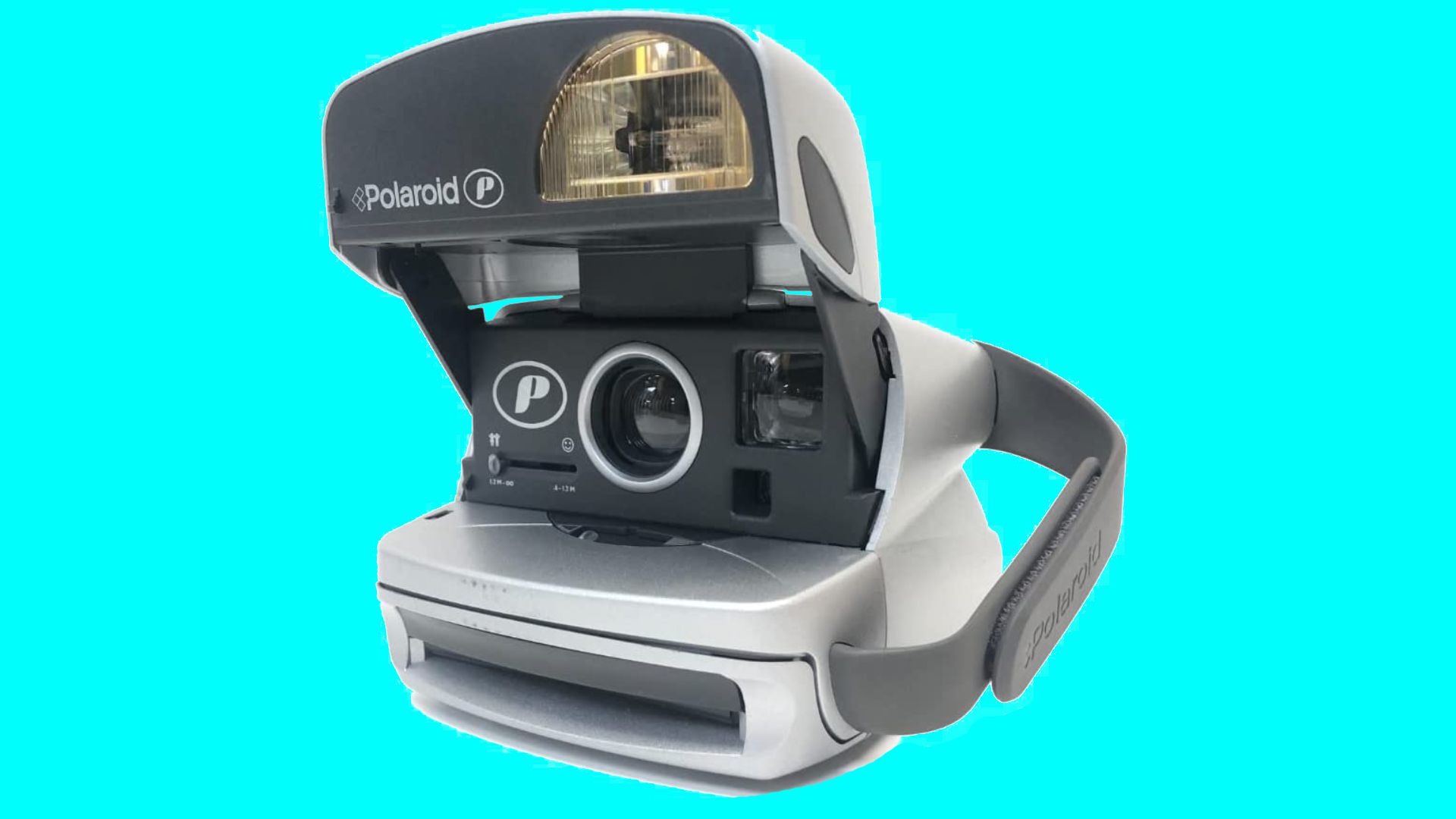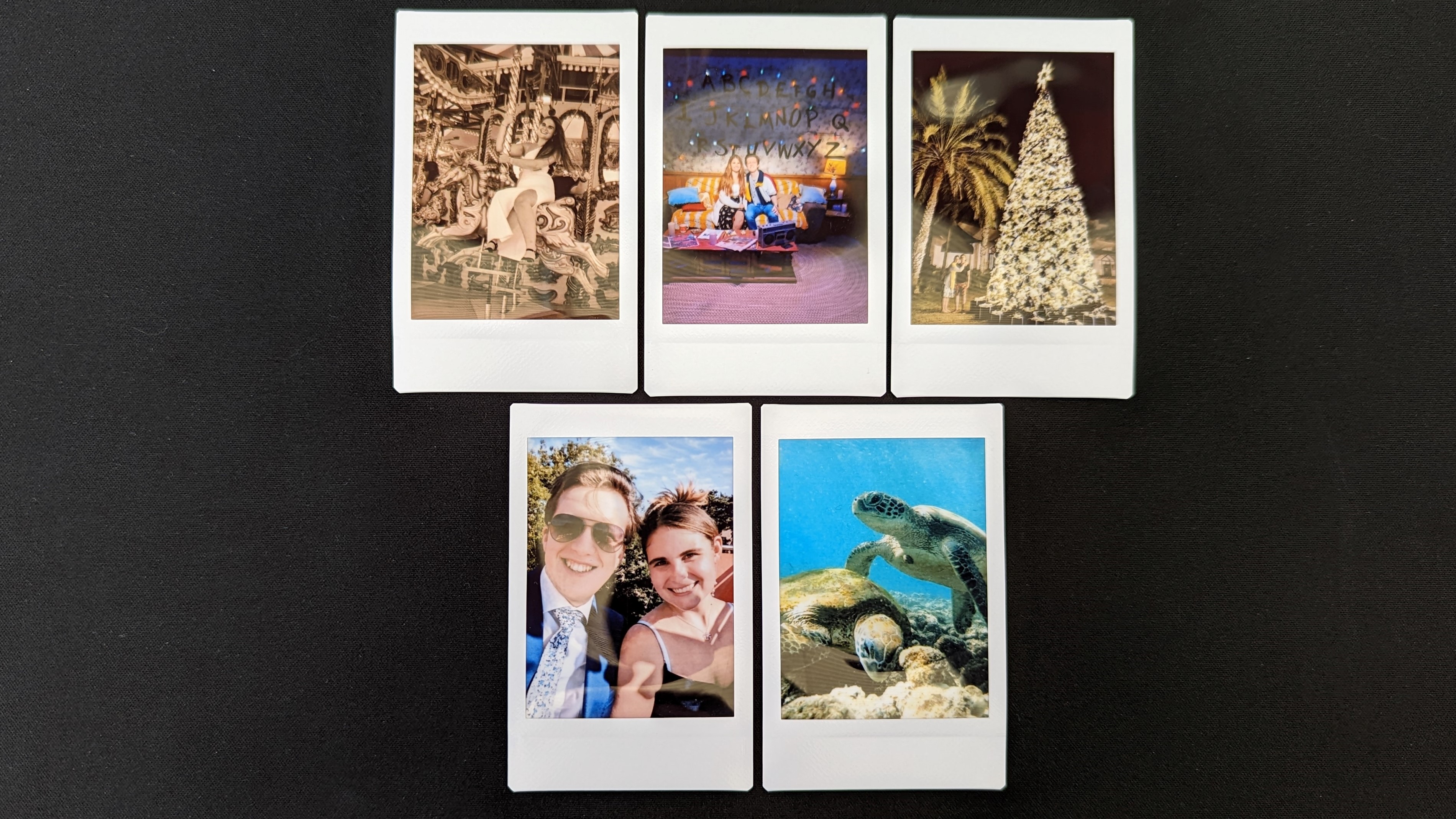Every couple of months, I’ll find myself on Amazon.com agonizing over the pros and cons of purchasing an instant camera.
My latest instant-cam fantasies have been revolving around the Polaroid Now+, one of the best instant cameras we’ve reviewed. Its iconic design makes it look like a modern version of a retro snapper, and it comes with mod cons like an accompanying smartphone app that opens up new creative possibilities for your pictures. But at $150 / £139 for the camera and roughly $2 / £2 per shot, it’s just not a purchase I feel I can justify.
So I close the tab and move on for several weeks before inevitably starting the cycle all over again. But now, that cycle might finally be coming to an end, and it’s all thanks to the Fujifilm Instax Mini Link 2 printer.
My love of instant cameras developed during my childhood. At some point between the ages of three and five, I was given a Polaroid P600, the first ever gadget that felt like it was mine.
This wasn’t the Sega Mega Drive that my parents would set up and then put away when my game time was up; nor was it the home computer that I struggled to operate without assistance. This was my camera, and it was simple to use, and it looked beautiful covered in stickers.
So when I futilely search for an instant camera today, what I’m really looking for is that bit of nostalgia, that thing that’ll take me back to the early 2000s. The issue is that I’m not a kid anymore, and over time, I've become aware of the instant-camera problems I never noticed before.

Shaky like a polaroid picture
To four-year-old me, every picture I printed with my Polaroid P600 was a masterpiece. I kept every single one in a binder (actually three binders as the first two got filled up) and would proudly show off my work to everyone that I could – whether they wanted to see it or not.
But I was not a good photographer, and even now I’m not sure I have the skill to wield an instant camera properly.
For some people, that flash and print mechanism – that one shot at glory – is what elevates instant cameras over even the best mirrorless or DSLR cameras. But, as my younger self demonstrated, if you aren’t careful, your whole roll of film can be wasted by blurry photo after blurry photo.
And as a child, you don’t care. You burn through the shots you have and then one day a new roll of film arrives as if by magic and you can naively snap away again. But now, as an adult that has to shell out for each picture myself, I don’t want to see my income frittered away because of my artistic incompetence.
(Here I would insert some of the pictures I took when I was younger, of poorly lit haunted houses, half-eaten cupcakes, and my pet dog, but my mum and dad couldn’t find my photo album. So instead, enjoy this recreation)

To that end, I much prefer the spray and pray method using my Google Pixel 6. Ask me to take a picture of you and you’ll find 10 to 100 new snaps in your phone's camera roll afterward, each a subtly different version of the one photo you wanted. That way, a poorly timed blink, or an awkward camera hold won’t ruin the day – somewhere in the mass of pictures you’ll find perfection.
But when using a smartphone, your snaps are only digital, and you don’t get to enjoy the magic of seeing the film sheet emerge blank and slowly develop into your masterpiece.
Hybrid instant cameras like the Fujifilm Instax Mini Evo have tried to bridge the gap between digital and instant snappers, but the quality of the digital pictures isn't great compared to what most smartphones can pull off. Plus with the Mini Evo, you have to print the picture before you can share it to your smartphone, which makes keeping images that you like but don't love more of a hassle than it needs to be.
A better solution is Fujifilm’s Instax Mini Link 2.
Instant perfection
It’s a Bluetooth smartphone printer that you can connect to your smartphone to print off images from your camera roll using instant film. Just like with an instant camera, you can watch the film develop over a few minutes, and your pictures will come out looking like you used a Fujifilm Instax Mini 11 – or another retro-style camera.
You can also print your images as they are or, using a greyscale or sepia filter, you can use the printer’s LED to draw in the air and make words and images appear in your snaps (or use your finger and the phone app for the same effect). You can even print a video that comes out as a stationary image accompanied by a QR code, which you can scan to bring the picture to life.

On top of that, the printer only sets you back $99 / £114 / AU$179, and while the film comes to roughly $1 / £0.75 a sheet (which can add up), you have much more control over your picture composition. Because you’re choosing what to print (and what not to print) you never feel like you’ve wasted a shot, making the costs feel more justified.
The only letdown is that the prints are smaller than I'd like. That's a fairly easy fix though – I just need to swap the Instax Mini Link 2 for the Instax Wide printer, or another alternative that uses larger film (which is only slightly more expensive).
So if you're thinking about picking up an instant camera like I've been considering, I'd strongly suggest looking at a smartphone printer that uses instant film instead. If your artistic integrity will let you get over the fact that it's not a true polaroid picture, then I'm sure you'll love the results.
If you've got a smartphone printer now headed your way ,you might want to browse our picks for the best camera phones so that the pictures you print look as impressive as possible.
from TechRadar - All the latest technology news https://ift.tt/lnocEjT